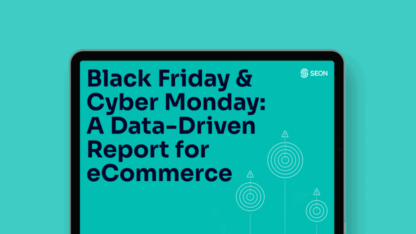What Is Flagging?
In fraud, flagging is an automated or manual process performed by fraud prevention software and/or fraud analysts. Organizations are alerted to suspicious, potentially fraudulent transactions, which can then be flagged for further investigation and manual review.
Visa alone processes around 29 million online card transactions per day. Ecommerce and other online financial activity continues to grow year on year.
Clearly, it’s not practical (or even feasible) for every electronic transaction to be manually checked. Flagging provides a way for organizations to focus their efforts on reviewing sufficiently suspicious activity while allowing genuine transactions to pass through systems with minimal friction.
Various things can be flagged – for example, individual values like a specific type of payment card, an account, a connection, a transaction value, or even an IP address or location.
Often, fraud prevention solutions consider a wide range of factors and data points before combining them to create a risk score. Crossing a certain threshold of risk results in an account or transaction being flagged.
Of course, sophisticated anti-fraud solutions will allow businesses to define and customize this threshold based on their risk appetite.
Learn how to leverage SEON’s unique customer intel to reduce fraud with machine learning, digital footprinting and advanced APIs.
Read the Guide
How Does Flagging Work?
Flagging usually involves the use of various rules and thresholds controlled by fraud prevention software. This can run in the background and while transactions are taking place, often via API integration. If any activity occurs which raises a red flag, a transaction can be paused, suspended/blocked, and then passed over for manual review.
For example:
- A company usually dealing in low-value transactions may configure its fraud prevention software to flag transactions over a certain value.
- A business dealing exclusively with US clients could configure its systems to flag transactions originating overseas, or via a VPN connection.
- An account making a series of transactions in suspiciously quick succession could be blocked and flagged for review.
Activity can be flagged as suspicious for a single reason or multiple reasons. A fraud score model can assign weight to various different factors. For example, certain transaction thresholds could increase a risk score by a different amount.
Locations can be highly significant too when calculating risk. For example, Stripe found that businesses in Latin America experience a fraud rate that is 97% higher than that seen in North America. This is the kind of thing companies should bear in mind when configuring flagging rules.
Fraud prevention software is usually highly customizable, allowing businesses to tailor their flagging rules to their industry and their usual business patterns. Increasingly, machine learning is used to provide systems with extra data to work with.
Why Is Flagging Important?
Flagging is a key element of fraud prevention. It alerts companies to suspicious financial activity and provides a middle ground where transactions can be manually reviewed rather than rejected outright or allowed through unchecked.
Automated flagging helps businesses to take a scientific and data-driven approach to which transactions are subject to additional scrutiny and enables minimal-friction strategies such as dynamic friction.
By carefully configuring such automation, companies can tailor flagging to their exact requirements. For example, an ecommerce store selling chocolates will have a very different risk profile (and exposure to different types of fraud) than a neobank or casino site.
What Red Flags Indicate Fraud?
Many potential red flags could indicate fraudulent activity.
They include:
- transactions taking place at unusual times of the day
- users logging on from unfamiliar locations
- payments being made to new or unusual accounts
- unusually high or low transaction values
- the use of VPNs and proxies
- the use of throwaway email accounts or virtual phone numbers
- missing convincing online activity – the digital footprint that the average person has
- several transactions taking place in quick succession
Partner with SEON to reduce fraud in your business with real-time data enrichment, whitebox machine learning, and advanced APIs.
Ask an Expert
How Does Flagging Help Fight Fraud?
Flagging helps to fight fraud both in the moment and over the long term. Flagging rules can help organizations to catch fraudsters in the act, prevent them from even getting a chance to attempt their schemes, and minimize financial losses – both to the company and to legitimate users.
Meanwhile, over time, flagging can help to build intelligence on new patterns of fraudulent behavior. This can entail identifying suspicious cards, locations, IP addresses and more, stopping fraud rings or even uncovering new strategies utilized by online criminals.








